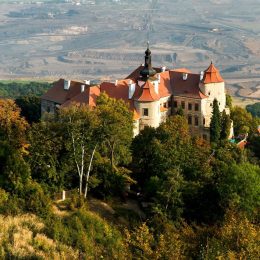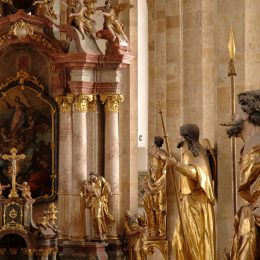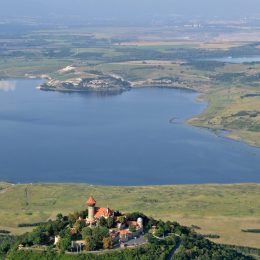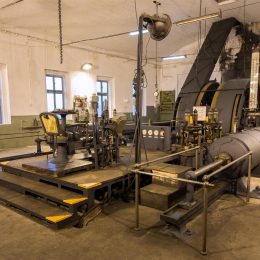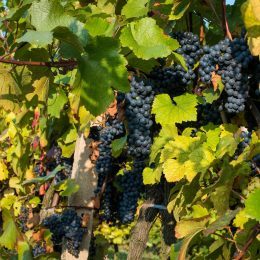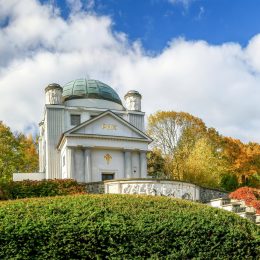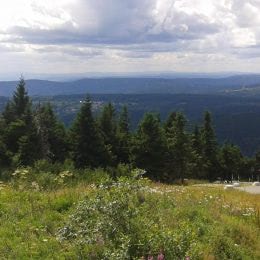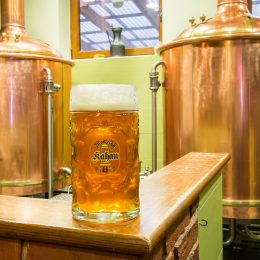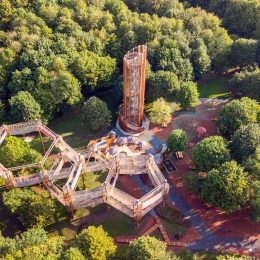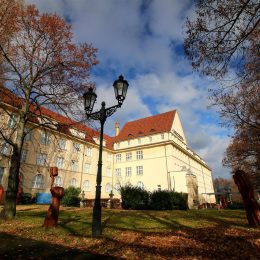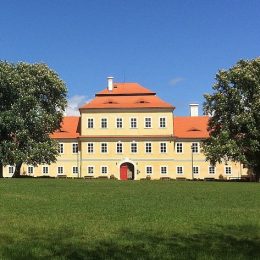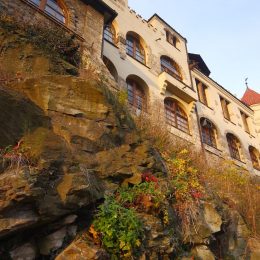The church which escaped its destruction on wheels.
Basic information
The Decanal Church of the Virgin Mary Assumption in Most (a national historic landmark) forms the centrepiece of the complex on the edge of the town. In 1975, this unique monument was “set in motion” on tracks and found itself sitting in its present location, a distance of over 841 meters. To this day, it is an exceptional technological achievement recorded in the Gold Guinness Book of Records. The church was thus saved from destruction. However, a majority of the buildings in Old Most did not survive due to coal mining.
The church is open to the public. It is beautifully decorated on the inside and the precise architectural concept of its space will impress every visitor. The powerful experience is multiplied by an authentic video about the moving of this extraordinary monument. Its tower offers a beautiful view of the surrounding area.
If you want to know more about other monuments that were moved from the old town of Most, click here.
Interior spaces
The premises of the church are not only for religious purposes but also used as a concert and wedding hall. Below ground is an exhibition hall of the Art Gallery in Most. Near the church is a Baroque hospital with a stylish restaurant and the Gothic chapel of the Holy Spirit, which is used for chamber exhibitions of fine arts. The surroundings of the church are decorated with Baroque sculptures salvaged from the old town and sculptures created by artists during sculpture symposiums.
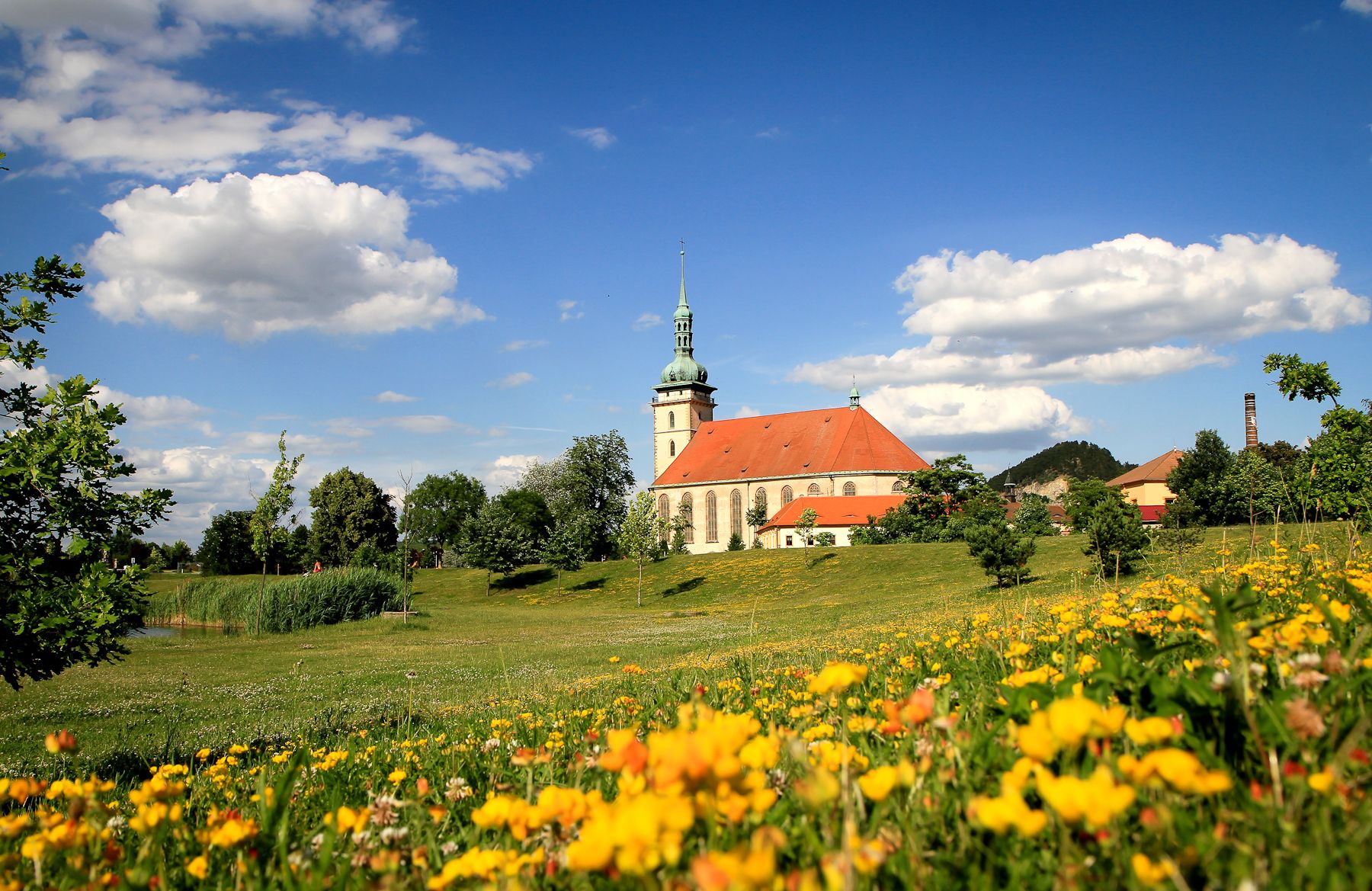
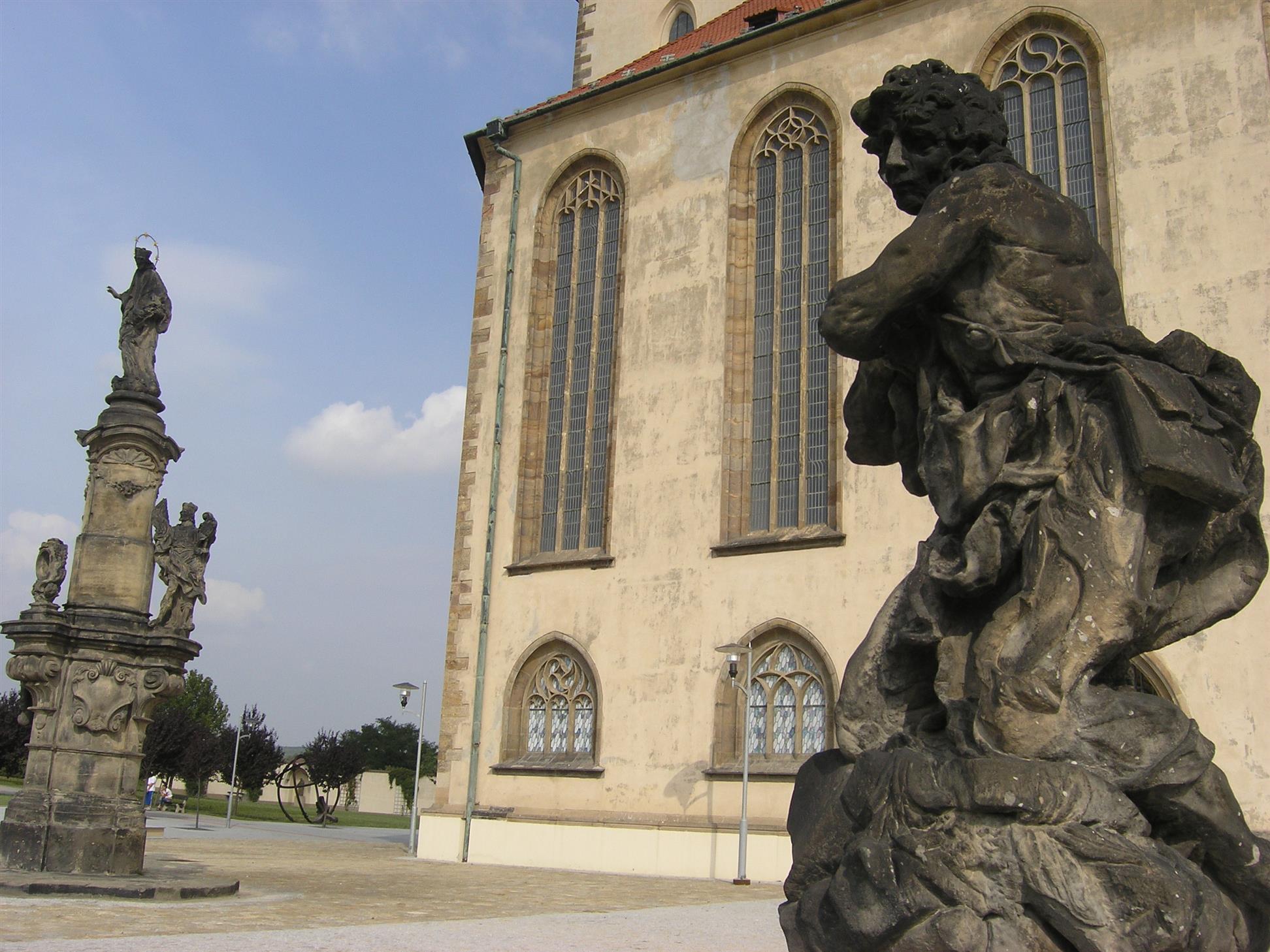
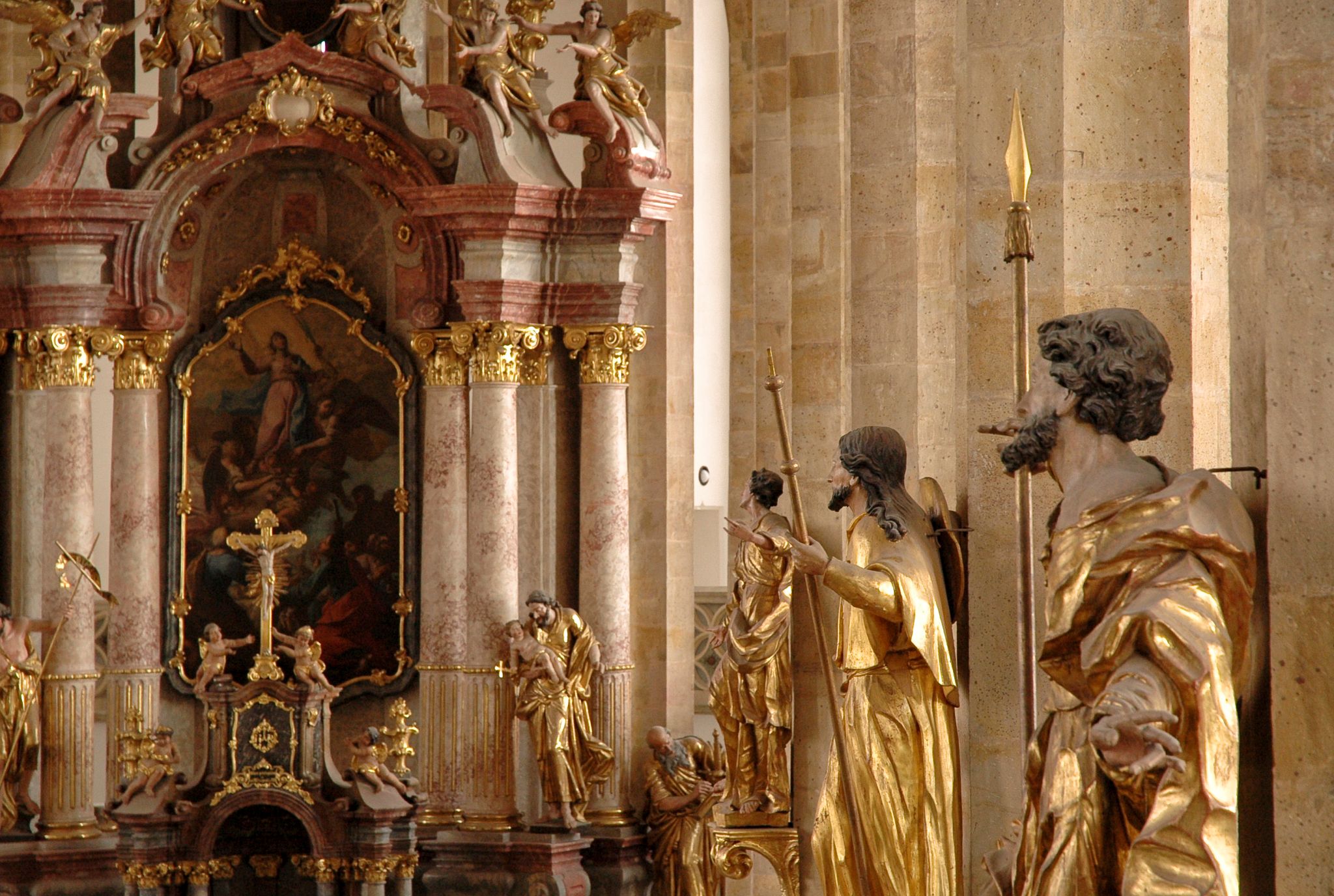
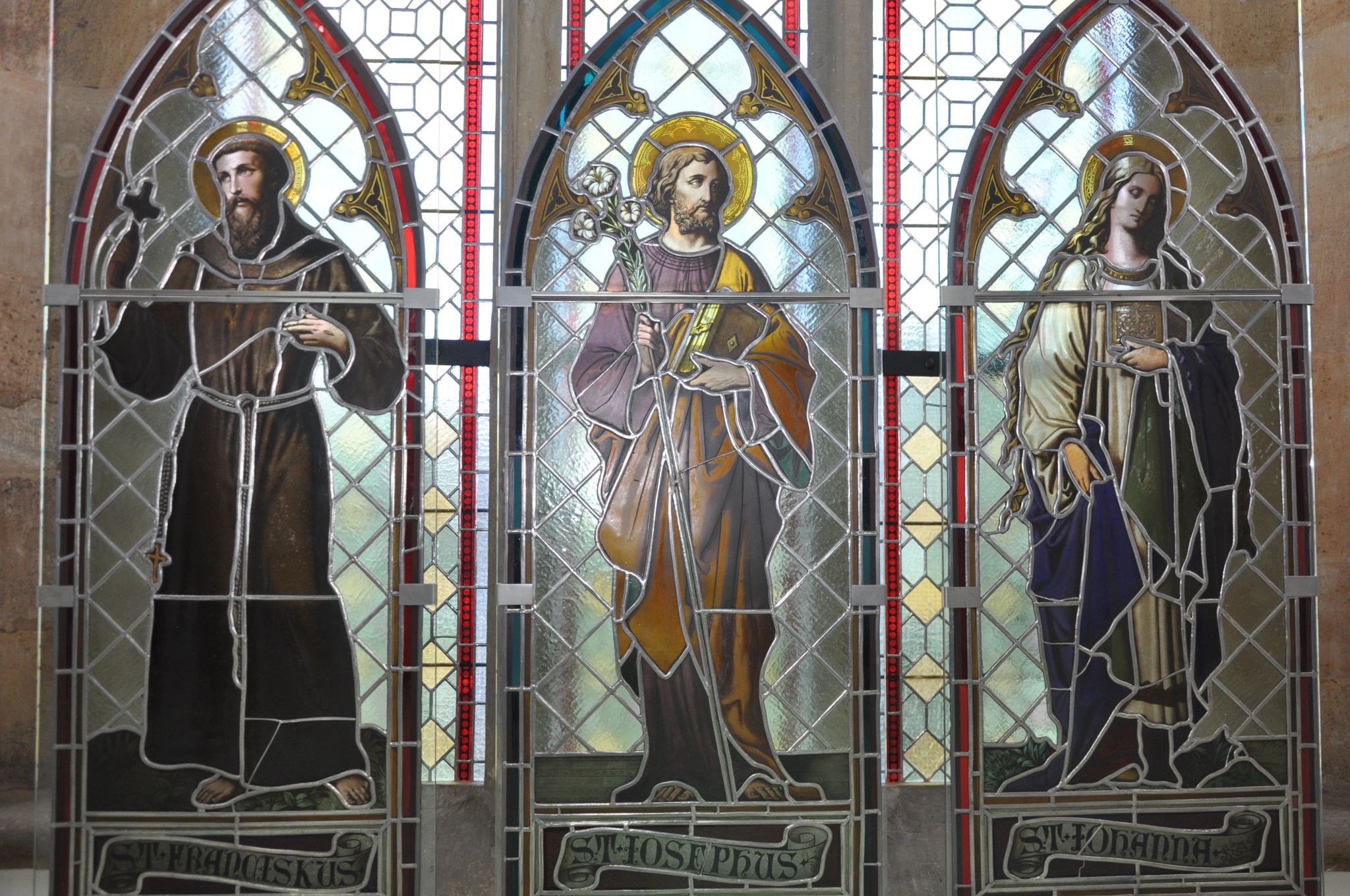
Panoramatic photo of the Decanal Church
Panoramatic photo – view from the tower
The history of the church and its interior decorations
History from the beginning to the end of the 16th century
The Decanal Church originally stood on the site of an early Gothic basilica. After the fire that destroyed the town in 1515, only a crypt of the former basilica has been preserved until this day. Therefore, in an effort to build a new church the town sought financial resources. In 1515 the burgesses declared a public collection with the blessing of the Pope. Not only in Bohemia, Moravia and Silesia but also in Meissen as well as Lusatia. The stone foundation was symbolically laid on August 15, 1517 on the name day of the Virgin Mary. The author of the architectural design of the new late-Gothic church was Jakub Heilmann of Schweinfurt. He controlled the technical part of the construction until his death. The construction of the church lasted until the end of the 16th century.
Interior decoration
The three-aisled church has a rectangular plan with a pentagonal presbytery and prismatic tower nested in the north to the layout of the ship. Concerning its interior decorations, the most noticeable is a unique artistic concept of the gallery coming from the third quarter of the 16th century. It shows scenes from the Old and New Testaments. A valuable part of the interior is also a large baptismal font. This art work was created between the years of 1560-1565 and is an excellent example of the Dresden Sculpture School.
The font lid is decorated with alabaster relief fields with scenes from the New Testament. On its tip is a traditional plastic representation of the baptism of Jesus Christ. The body of the baptismal font is decorated with reliefs of themes from the Old Testament relating to the theme of water. It is also worth mentioning that the Gothic sanctuary with Renaissance ornamentation was moved to the sacristy. It was due to the construction of the Baroque altar. The monumental Baroque altar dedicated to the Virgin Mary itself is an important cultural monument.
Altar decoration
The architecture of the altar occupies the space of the presbytery across the entire main aisle. That is up to a height of 17 meters. The front part of the altar is carved from marble with the rest of the architecture imitating marble. Gothic and Renaissance artists were inspired mainly by Saxony during their work on the decoration of the Church in Most. While the Baroque decorations draw their inspiration mainly from the Episcopal of Litoměřice. Stucco works on the altar, which is made mainly of artificial marble, were carried out by Johann Ignaz Hennevogel.
The representation of the Virgin Mary Assumption on the altar painting is the work of a significant late-Baroque Czech painter named Josef Kramolín. The altar is completed by gilded wooden statues of saints (St. Joseph, St. Peter, St. John the Baptist, St. Paul) slightly larger than life-size from the famous Baroque sculptor named Bartholomew Eder of Tyrol. In the niche of the front part of the altar is a statue of the Virgin Mary in the so-called beautiful Czech Gothic style.
However, it is not the original and is only a copy of the famous “Madonna from Zahražany”, which dates back to sometime before 1398. The original is now housed in the National Gallery in Prague. The statue came from the destroyed monastery of Sisters of Mary Magdalene Penitence in Most and according to legend, it saved the nuns from death by the hands of the Hussites. The interior decoration of the Church of the Virgin Mary Assumption also includes sculptures from the Baroque sculptor named Jan Adam Dietz from Jezeří. For the church in Most, he made seven statues of the Apostles which around 1730 were placed on the pillars of the main nave.

